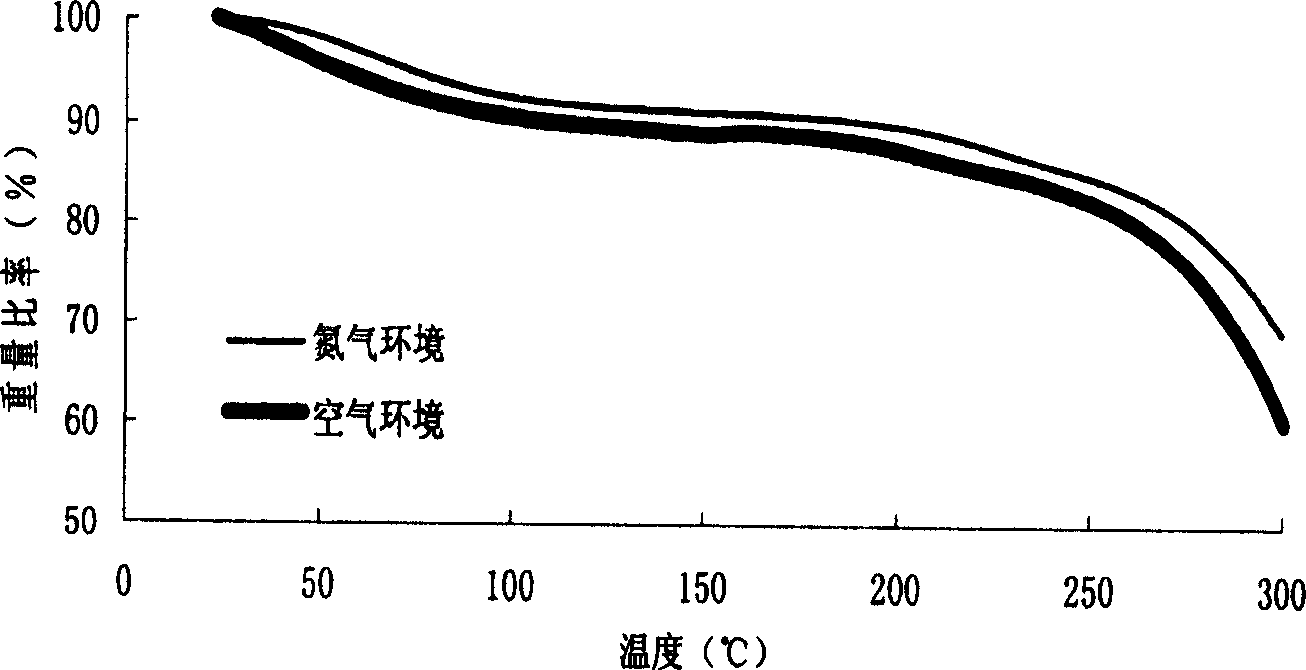Method for preparing plastic wood
A technology of plastic wood and thermoplastics, applied in the field of plastic wood, can solve the problems of slow progress in high-value utilization of recycled materials, difficult to popularize and apply, etc.
- Summary
- Abstract
- Description
- Claims
- Application Information
AI Technical Summary
Problems solved by technology
Method used
Image
Examples
Embodiment 1
[0034] 4Kg of rice husk is heated and baked for one hour at a high temperature of about 150°C. Soak in 10% NaOH solution at 23°C for 48h to remove low-molecular impurities such as pectin, lignin, hemicellulose, and thermal decomposition products during heat treatment; then dry at 110°C for 5 hours to dry. Add 80 grams of benzoic acid, 50 grams of stearic acid, and 40 grams of silane coupling agent (A151) into the rice husks dried above. Add 6Kg recycled PET bottle flakes (polyethylene terephthalate) (from Zijiang Industry Group Bottle Company) and mix in a high-speed mixer at room temperature for 10 minutes, then add all the materials into a dehumidifier and dry at 110°C for 4 Extruded with a twin-screw extruder after 1 hour.
[0035] number of segments
1
2
3
4
5
6
7
temperature °C
150
150
150
180
180
200
220
220
[0036] Speed: 160rpm; Feeding speed: 30...
Embodiment 2
[0039] 4Kg of rice husk is heated and baked for one hour at a high temperature of about 150°C. Soak in 10% NaOH solution at 23°C for 48h to remove low-molecular impurities such as pectin, lignin, hemicellulose, and thermal decomposition products during heat treatment; then dry at 110°C for 5 hours to dry. Add 80 grams of glacial acetic acid, 50 grams of stearic acid, and 40 grams of silane coupling agent (A171) to the rice husks that have been dried above. Add 6Kg of polyethylene resin, mix in a high-speed mixer at room temperature for 10 minutes, put all the materials into a dehumidifying dryer, dehumidify and dry at 110°C for 4 hours, and then extrude with a twin-screw extruder.
[0040] number of segments
1
2
3
4
5
6
7
One group
100
110
120
130
130
130
130
130
[0041] Rotational speed: 100rpm; feeding speed: 9rpm.
[0042] The extruded material is mol...
Embodiment 3
[0044] 4Kg of rice husk is heated and baked for one hour at a high temperature of about 150°C. Soak in 10% NaOH solution at 23°C for 48h to remove low-molecular impurities such as pectin, lignin, hemicellulose, and thermal decomposition products during heat treatment; then dry at 110°C for 5 hours dry. Add 80 grams of glacial acetic acid, 50 grams of stearic acid, and 40 grams of silane coupling agent (A171) to the rice husks that have been dried above. This batch of material is material 1.
[0045] 6Kg of polyethylene resin was dried in a vacuum drying oven at 110°C for 4 hours, and this material was material 2. Material 2 is fed in the feeding area of the extruder far away from the die, and material 1 is fed in the feeding port (equivalent to the second heating section of the screw) that is closer to the die of the extruder. Extrude out of the machine.
[0046] number of segments
1
2
3
4
5
6
7
One group...
PUM
| Property | Measurement | Unit |
|---|---|---|
| Tensile strength | aaaaa | aaaaa |
| Tensile strength | aaaaa | aaaaa |
| Tensile strength | aaaaa | aaaaa |
Abstract
Description
Claims
Application Information
 Login to View More
Login to View More - R&D
- Intellectual Property
- Life Sciences
- Materials
- Tech Scout
- Unparalleled Data Quality
- Higher Quality Content
- 60% Fewer Hallucinations
Browse by: Latest US Patents, China's latest patents, Technical Efficacy Thesaurus, Application Domain, Technology Topic, Popular Technical Reports.
© 2025 PatSnap. All rights reserved.Legal|Privacy policy|Modern Slavery Act Transparency Statement|Sitemap|About US| Contact US: help@patsnap.com


